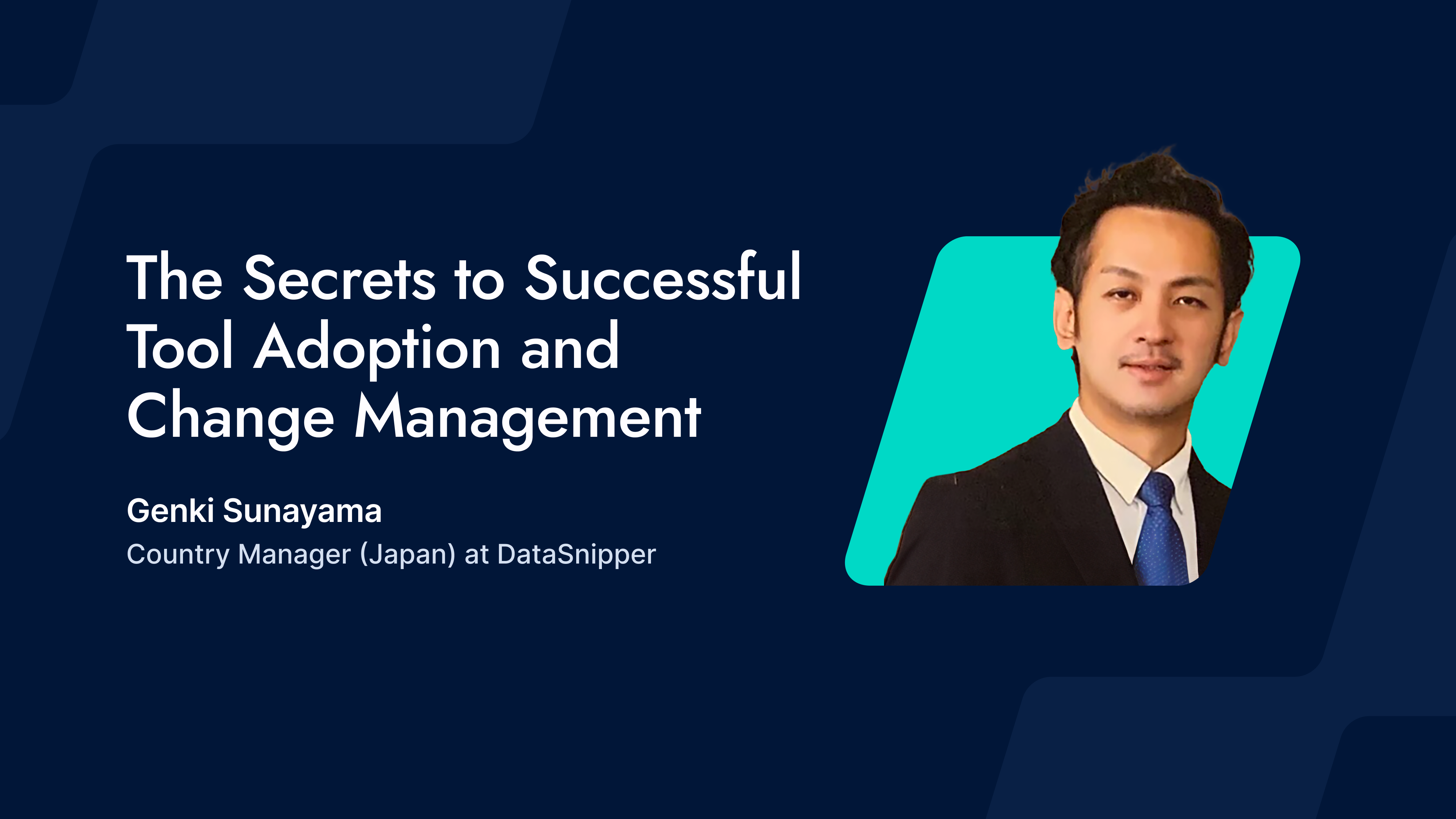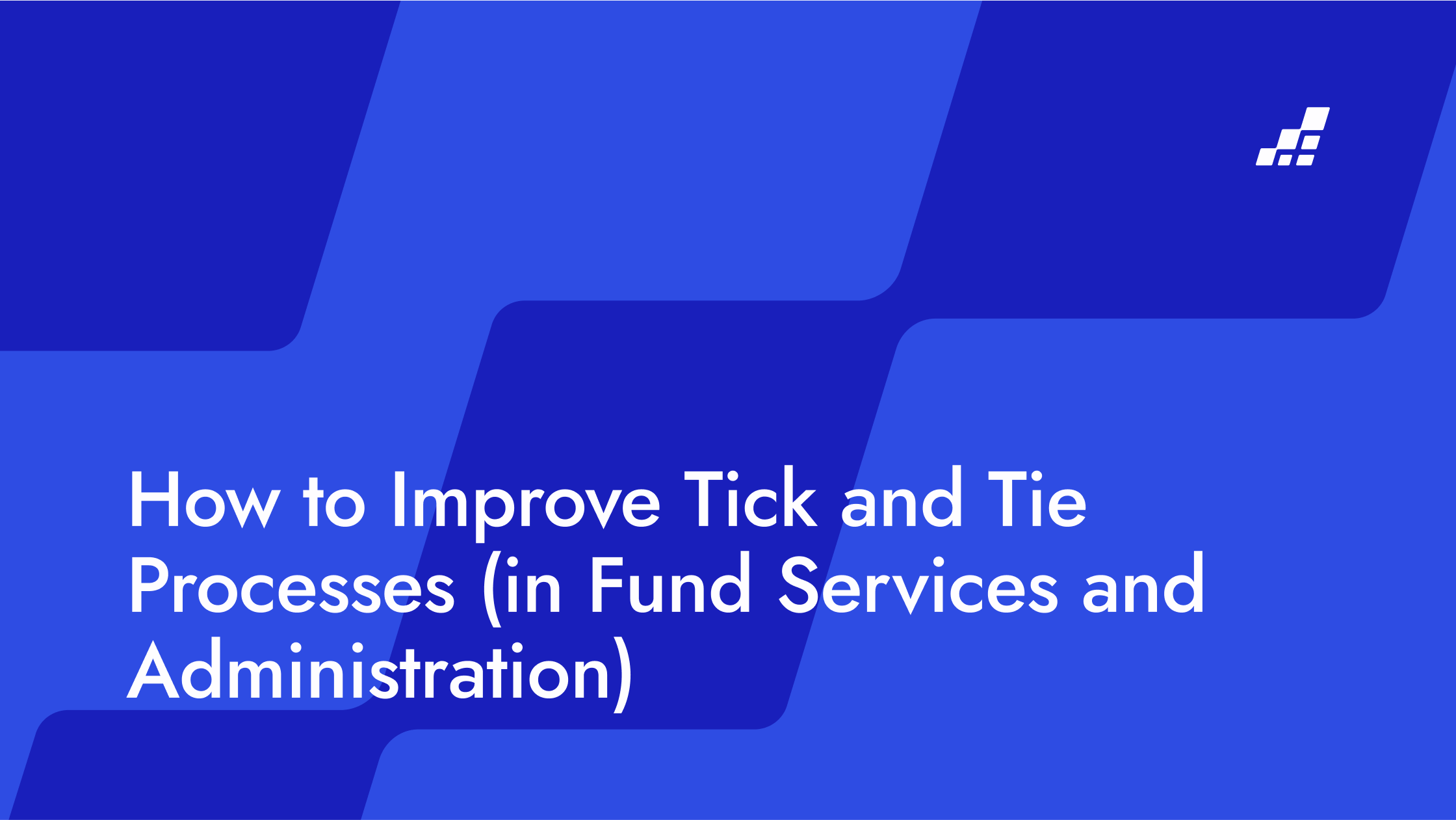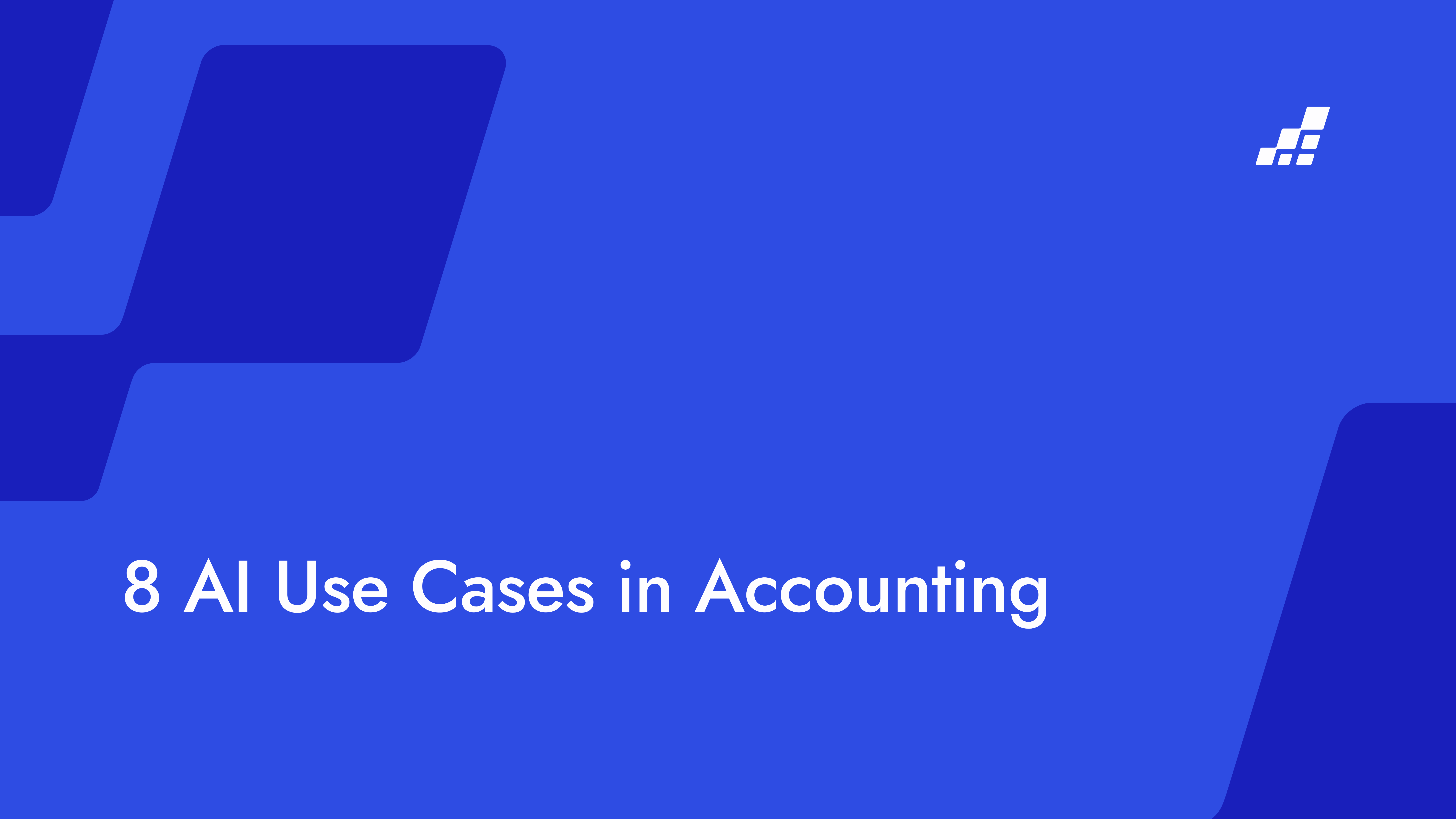- /
- Blog
Accounting & Auditing Tech-Next 2024 Event Report: The Secrets to Successful Tool Adoption and Change Management

Hi, I’m Genki, the Country Manager at the DataSnipper Japan office.
I had great discussions with other participants on topics ranging from the challenges audit firms and accountants face during digital transformation to the opportunities that come with it.
In this blog, I want to share some insights from my presentation at the event, focusing on change management—specifically, the challenges I’ve observed and key tips for successful implementation based on my experience.
A Bit About Me
I’ve spent many years in the tech industry, working on robotics, AI, and data analytics solutions. I’ve been involved in developing and implementing internal and commercial tools for hundreds of companies, and I’ve learned a lot about what makes tool adoption succeed—or fail.
When I asked those involved in tool implementations if they believed it was successful, only about 5% of end-users and 20% of executives or IT teams responded with a “yes.” These figures align with statistics from consulting firms.
Those who consider their implementation successful all have one thing in common—they prioritized how user-friendly the tool was during the selection process.
Why User-Friendliness Matters
“User-friendly” is more than a buzzword. It means technology should clearly communicate its purpose, when to use it, and how to use it at a glance, and it should allow tasks to be completed in just a few steps.
I used to work with a tool designed to cover nearly every business operation for companies across Japan. Looking back at it more honestly, it had thousands of buttons and endless input fields. The takeaway—if you prioritize covering as many use cases as possible when choosing a tool, you’re almost guaranteed to end up with something ridiculously complicated.
It reminds me of an analogy I heard about an ice cream parlor that prided itself on over 100 flavors. At first glance, it seemed like a dream—so many options to choose from! But for customers, the reality was overwhelming. With too many choices, they struggled to decide, often second-guessing their pick or sticking to something safe. Worse, most flavors were mediocre because the parlor spread its resources thin, trying to offer everything instead of perfecting a few standout options.
And that’s the big trap. Tools like this bring extra headaches, like endless training sessions for every scenario, massive manuals and FAQs, and constant monitoring and follow-ups to fix usability issues.
On top of that, complex tools often overload internal support teams, add stress to operations, and demand higher skills to manage. Ironically, it’s often the organizations with fewer resources or skills that end up stuck with these challenging tools.
Then, there’s the unexpected cost of trying to make the tool more user-friendly later. By that time, users usually already hated it, and fixing things became an uphill battle.
The worst part? Once users decide a tool is hard to learn and use, convincing them to give it another shot is almost impossible. At this point, teams spent more time trying to navigate the system than actually benefiting from it.
Honestly, in my experience, you can usually tell within the first month—or sometimes even after the first internal training—whether a tool is going to succeed or flop.
No matter how wide a tool's functionality might be, if it’s difficult to use, it creates a vicious cycle: change management becomes significantly harder, and even with the best training environment in place, adoption just doesn’t take off.
In some cases, it’s better to avoid trying to do everything with one tool. Instead, choosing a few easy-to-use tools and gradually expanding their scope could often lead to better results.
What Makes a Tool User-Friendly?
Typically, it’s designed specifically for a certain industry or task, targeting specific people. At the same time, these tools often have the flexibility to adapt to variations in workflows across different cases in the targeted industry.
One day, DataSnipper’s founders and their auditor friends were talking about how they were buried in repetitive, manual tasks. From those conversations, the founders envisioned software that could automate manual information verification directly within Excel—and that’s how DataSnipper was born.
Since it’s an Excel add-in, anyone familiar with Excel doesn’t need to learn a completely new tool from scratch. Plus, its core features are divided into five color-coded buttons, making it incredibly intuitive to use.
While companies sometimes develop in-house tools tailored to their own needs, the broader the scope, the greater the operational complexity, and the harder it becomes to secure executive approval. This often results in tools ending up with limited capabilities that still require substantial resources to manage.
That’s why I’ve always believed in choosing user-friendly and proven effective tools by multiple companies in the same industry.
The Proven Success of DataSnipper
DataSnipper was founded in the Netherlands and is now used by over 500,000 users across 100+ countries; its adoption extends beyond English-speaking markets and is growing in regions like China.
We set up our Japan office this July and are already supporting audit and tax firms, including the Big 4. DataSnipper is a tool with proven adaptability across various industries and regions.
With its user-friendly design, DataSnipper has helped countless companies achieve smoother change management and greater operational efficiency.
I’m excited to see how this technology can benefit Japanese companies and look forward to supporting its adoption here.


